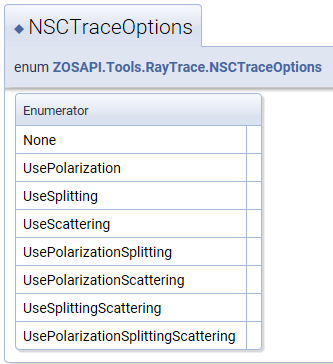I am simulating light propagation through an optical stack and analyzing the path of individual rays.
Using the IBatchRayTrace interface is the only way I found to achieve reasonable performance, however when using IRayTraceNSCData, the NSCRayTraceOptions (e.g. in the AddRay function) are limited to either “UseSplitting” or “UseScattering” as enumerated objects. Ordinary NSC raytracing allows for both options to be toggled individually via booleans, however as I need to simulate a large number of rays with individually set properties, this quickly becomes infeasible performance-wise.
Is there any way to activate both “UseSplitting” and “UseScattering” when using IBatchRayTrace?
I would be grateful for any help/ideas/insight!







